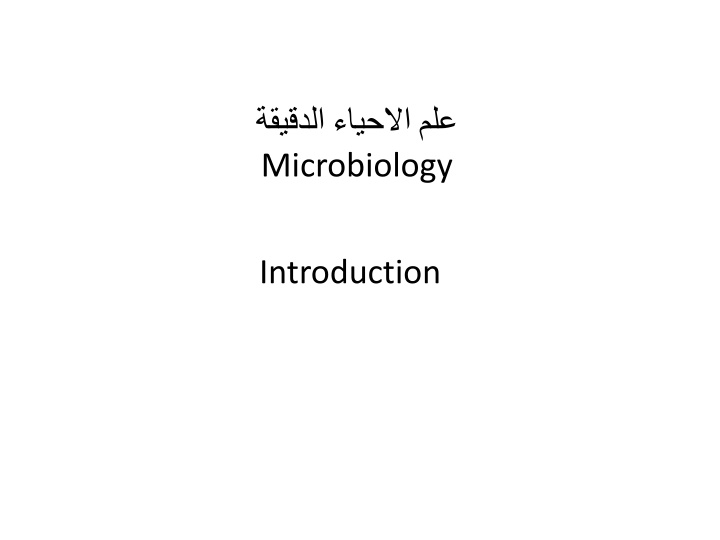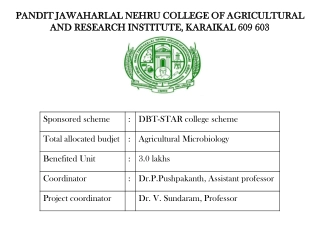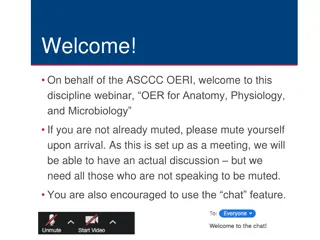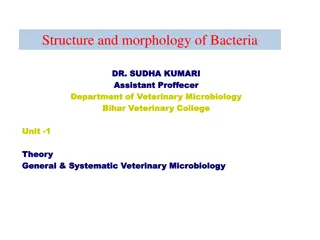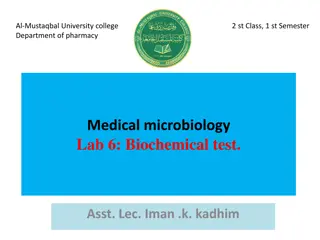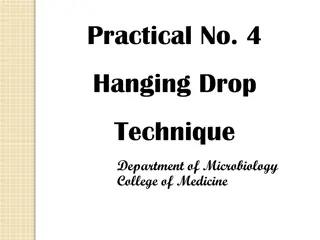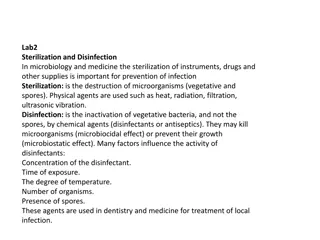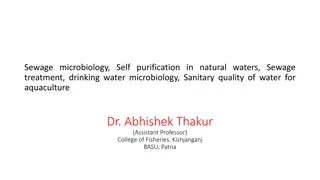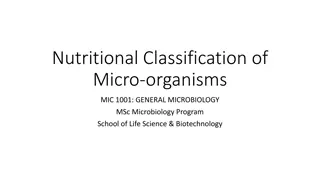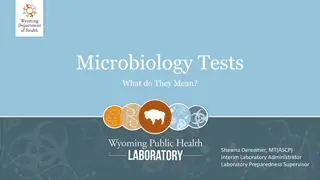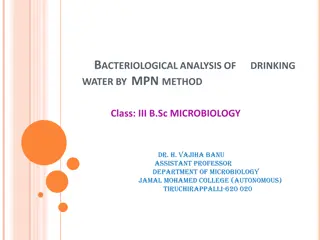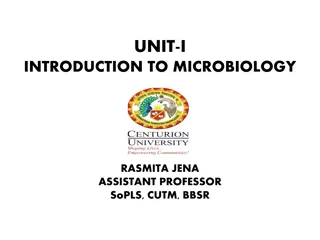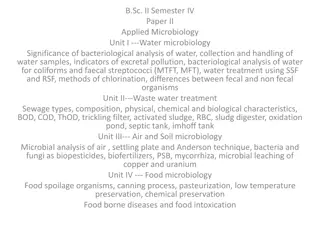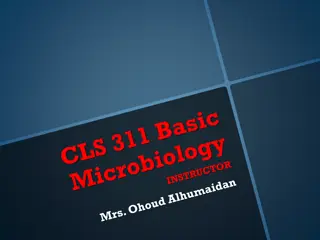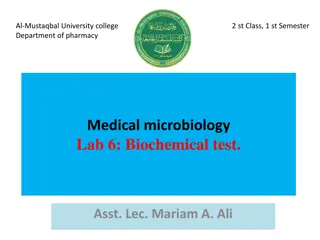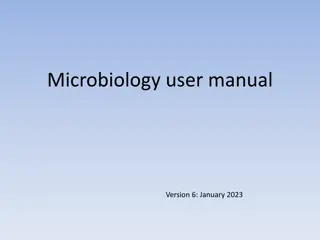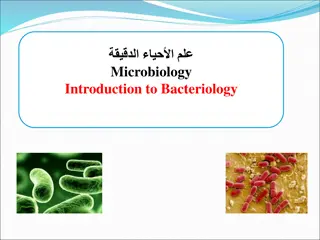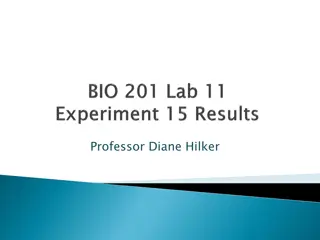Microbiology
Microbiology is the study of small life forms known as microorganisms, which include bacteria, viruses, fungi, algae, and protozoa. These organisms exist everywhere, from air to water to soil. Understanding microbiology helps in the development of antibiotics, vaccines, and biological weapons, as well as in pathology and environmental protection. Explore the history, characteristics, taxonomy, and benefits of microorganisms to deepen your knowledge of this fascinating field.
Uploaded on Feb 23, 2025 | 1 Views
Download Presentation

Please find below an Image/Link to download the presentation.
The content on the website is provided AS IS for your information and personal use only. It may not be sold, licensed, or shared on other websites without obtaining consent from the author.If you encounter any issues during the download, it is possible that the publisher has removed the file from their server.
You are allowed to download the files provided on this website for personal or commercial use, subject to the condition that they are used lawfully. All files are the property of their respective owners.
The content on the website is provided AS IS for your information and personal use only. It may not be sold, licensed, or shared on other websites without obtaining consent from the author.
E N D
Presentation Transcript
Definition of Microbiology Microbiology: mikros (small) bios (life) logos (science
Characteristics of Microorgansims 1- size. 2- Unicellular or Multicellular (no differences in the structure) 3- Existence: everywhere (air, water, soil, corpse, plant surface, etc)
Taxonomy of microorganisms Eukaryotae: fungi,, microscopic plants (algae) and Protozoa. Prokaryotae: 1-Bacteria 2- Cyanobacteria Archaea. Viruses are acellular structure. though not strictly classified as living organisms, are also studied
vacuole Endoplasmic reticulum mitochondrion nucleus ribosomes Golgi apparatus Cell wall Plasma membrane chloroplast Eukaryotic cell
Groups of microorganisms 1 1- Viruses Pass through filters Obligate parasites and can infect human, animals, plants and bacteria Electronic microscope Intracellular 2- Bacteria Unicellular Light microscope
Groups of microorganisms 2 3- Fungi Multicellular (Mushroom) or unicellular (Yeast) No chlorophyll 4- Algea Simple plants Exist as Unicell and clusters No differences in the structure and function chlorophyll Photosynthesis Soil, water 4- Protozoa Single animal cell Human and animal diseases
Benefits of microbiology 1- Antibiotics 2- Vaccine 3- Biological weapons 4- Pathology 5- Cosmetic and food 6- knowing these microorganism can protect us form disease 7- Rid of Waste and pollution 8- Help scientific of genetic engineers to understand DNA and RNA
Ibn Sn (Avicenna) Ibn S n is regarded as a father of early modern medicine, and clinical pharmacology particularly for his introduction of systematic experimentation and quantification into the study of physiology, his discovery of the contagious nature of infectious diseases such as measles and smallpox. The introduction of quarantine to limit the spread of contagious diseases,
Abu Bakr El-Razi. * He was the first scientist difference between the "smallpox" and "measles", and presented a detailed description of the two diseases, and symptoms of each. Abu El-kasim El-Zhrawy. * He is Arabian Scientist, excelled in the field of medicine. * He wrote a medical encyclopedia and wrote books on open abscess, symptoms and treatment, which are the microbial diseases.
Antonie van Leeuwenhoek Leeuwenhoek (1632 1723) was a Dutch tradesman and scientist. He is commonly known as "the Father of Microbiology", and considered to be the first microbiologist. He is best known for his work on the improvement of the microscope and for his contributions towards the establishment of microbiology. Using his handcrafted microscopes, he was the first to observe and describe single- celled organisms.
Antonie van Leeuwenhoek In 1676, first to observe living microbes. His single-lens magnified up to 300X 1676 . 300
Robert Koch Robert Koch (1843 1910) was a German physician. He became famous for isolating Bacillus anthracis Tuberculosis bacillus (1882) and Vibrio cholerae (1883) and for his development of Koch's postulates. He was awarded the Nobel Prize in Physiology or Medicine for his tuberculosis findings in 1905. (1877), the
Louis Pasteur Louis Pasteur ( 1822 1895) was a French chemist and microbiologist born in Dole. He created the first vaccine for rabies and anthrax. He was best known to the general public for inventing a method to stop milk and wine from causing sickness, a process that came to be called pasteurization
Martinus Beijerinck Beijerinck (1851 1931) was a Dutch microbiologist and botanist. He is considered one of the founders of virology. In 1898, he published results on the filtration experiments demonstrating that tobacco mosaic disease is caused by an infectious agent smaller than a bacterium.
Sergei Winogradsky Winogradsky (1856- 1953) was a Ukrainian-Russian microbiologist, ecologist and soil scientist. He identified the obligate pasteurianum, which is capable of fixing atmospheric nitrogen. anaerobe Clostridium
